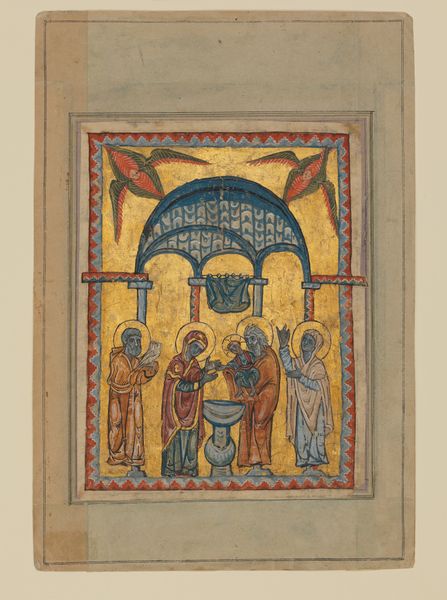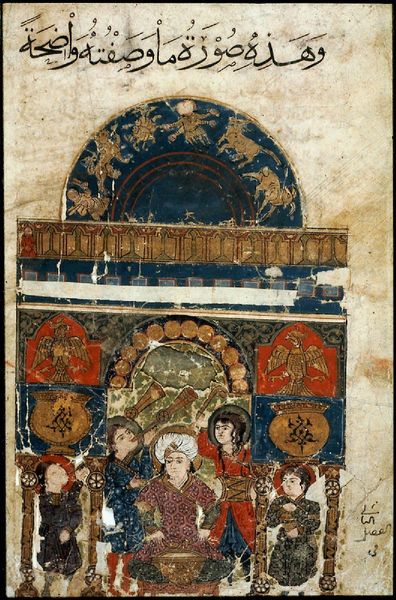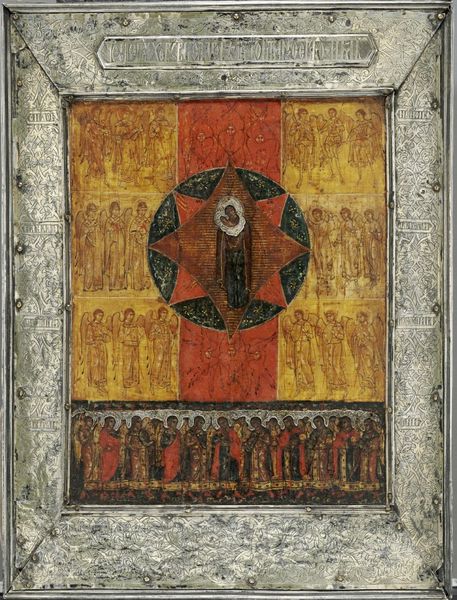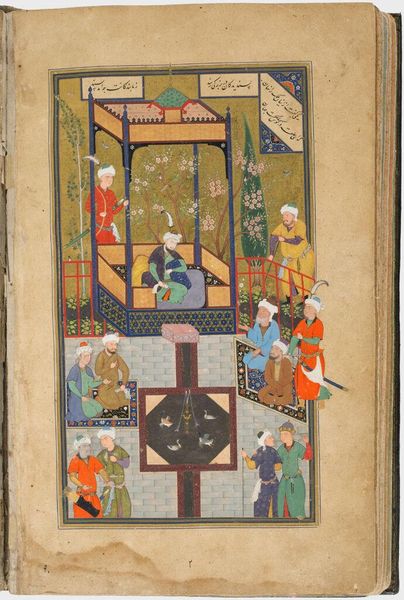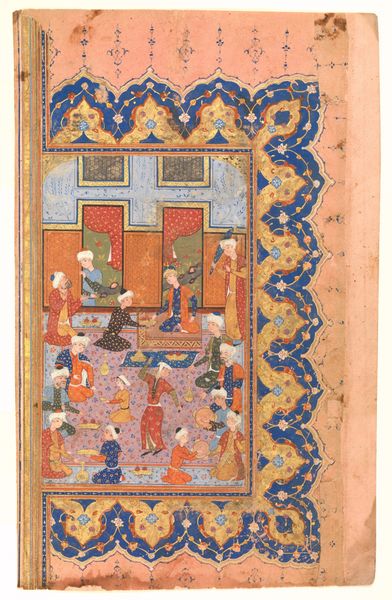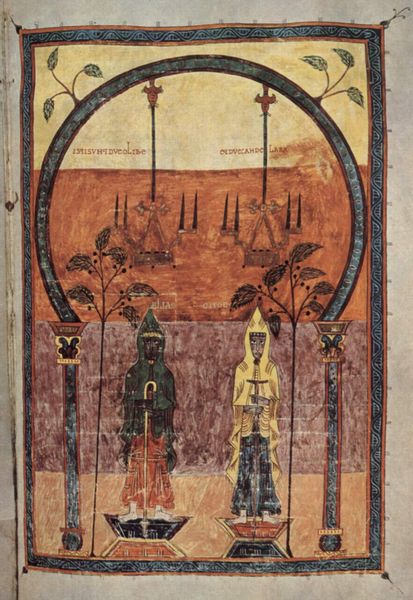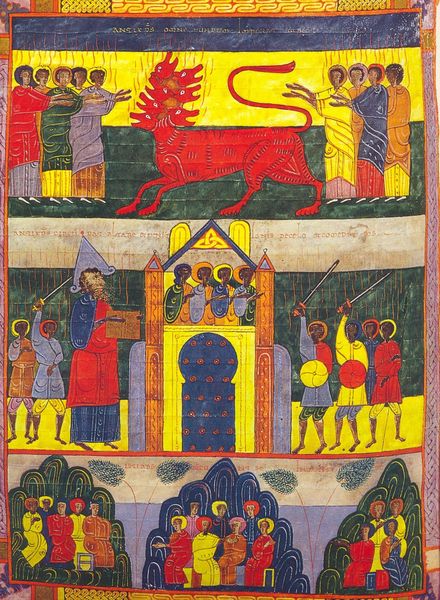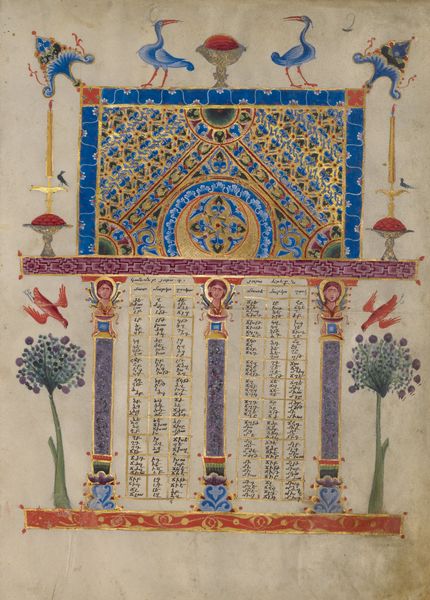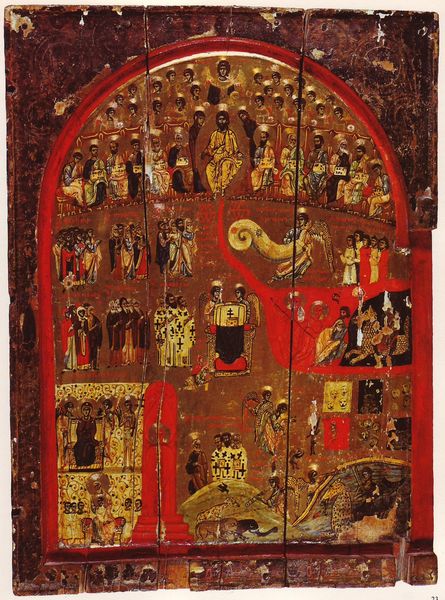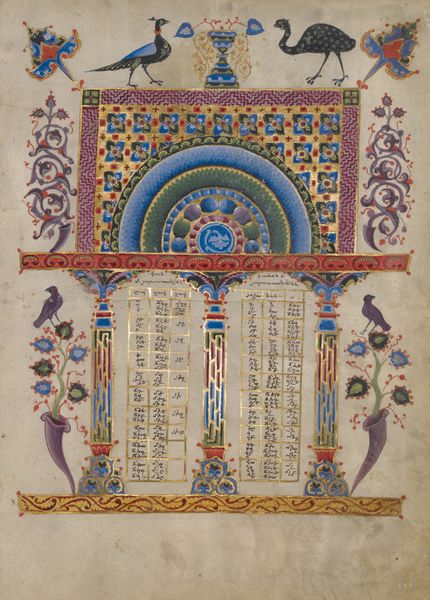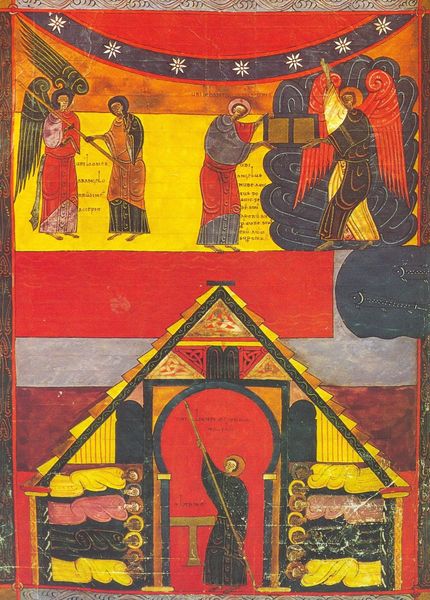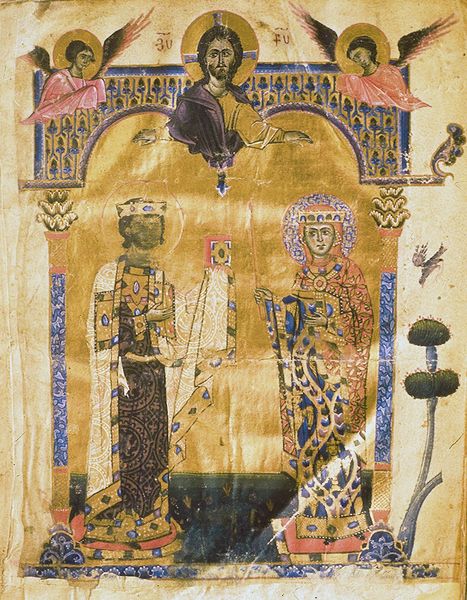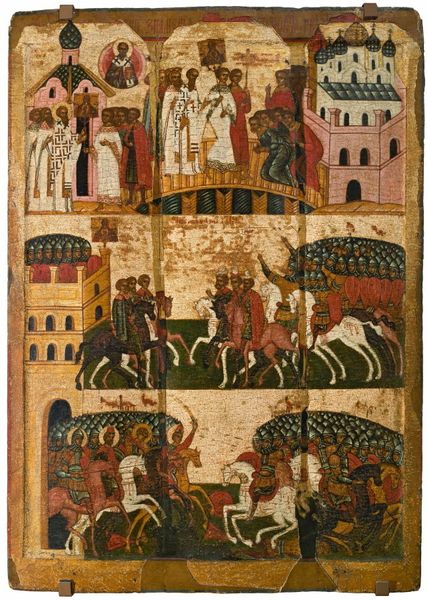
tempera, ink
#
medieval
#
tempera
#
pottery
#
figuration
#
ink
#
coloured pencil
#
islamic-art
#
miniature
Dimensions: 39.8 x 27.5 cm
Copyright: Public domain
Curator: This exquisite miniature, “The Castle Water Clock,” comes to us from the ingenious mind of Al-Jazari in 1206. Created with tempera, ink, and coloured pencil, it beautifully demonstrates early Islamic mechanical innovation. Editor: It has a playful, almost cartoonish quality, yet there’s this remarkable detail, a vibrant flatness. It’s clear that precision was very important to this particular image. Curator: Absolutely. The clock wasn’t merely a functional device but a symbolic representation of power and knowledge within the medieval Islamic world. Consider the inclusion of figures striking instruments at set intervals, reflecting the time through sound as well as visual indicators. Editor: What I find interesting is how the piece showcases a merging of roles, doesn't it? We see artistry employed in crafting something very utilitarian. How labour and creativity intersect right at the material level here. And those little trumpets the men play - very precisely fashioned. What of the pottery itself? Was the quality very prized, too? Curator: Precisely, Al-Jazari’s work pushes us to re-evaluate traditional hierarchies between "art" and "craft", presenting a model in which scientific innovation, decorative artistry and social purpose were interwoven. This reminds me of our ongoing critical reassessment of labor hierarchies in modern digital art creation as well. Editor: You know, thinking of contemporary creation, I do wonder what kind of inks Al-Jazari might have been using! I would bet good quality inks for drawings of high complexity such as these were difficult to acquire. The cost of those materials alone would certainly reflect their function in the display of the wealth and access of their owners, even beyond the craftsmanship they represented. Curator: And to underscore that point, the presence of astrological symbols at the top suggests the clock's connection with larger, cosmological understandings. It served not only a practical need but linked earthly time with celestial movements, creating a statement about the owner’s comprehensive grasp of their world, and, dare I say it, their privilege within it. Editor: Well, I never thought I'd become so fascinated by the labor that went into building this beautiful clock. Curator: Indeed! By viewing "The Castle Water Clock" through a multidisciplinary lens, we can more deeply understand its lasting significance.
Comments
No comments
Be the first to comment and join the conversation on the ultimate creative platform.
